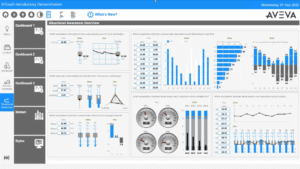The fashion industry moves faster than ever, and brands need accurate, timely insights to stay ahead. In recent years, AI fashion forecasting has emerged as a game changer—replacing intuition and gut-feel with data-driven precision. From runway shows to street style, AI analyzes billions of data points to predict upcoming trends in real time, reshaping how American designers and retailers plan their collections.
Yet traditional forecasting methods, grounded in expert intuition and cultural observation, still hold value. In this blog, we compare the old and the new: how traditional fashion forecasting works, what limitations it faces, and how AI fashion forecasting delivers speed, scale, and accuracy. We’ll also explore real-world impacts, including sustainability gains and more inclusive trend discovery. Finally, we’ll consider how the best brands blend AI insights with human creativity to lead the industry forward.
Traditional Fashion Forecasting: Art, Instinct, and Limitations
For decades, fashion forecasting was an art form practiced by a small circle of experts. These forecasters combined:
- Runway Analysis: Attending major fashion weeks in New York, Paris, and Milan to spot designers’ seasonal signatures.
- Cultural Observation: Monitoring movies, music, art, and street style to capture emerging aesthetics.
- Market Sampling: Gathering sales data from specialty boutiques and department stores to gauge consumer preferences.
- Expert Panels: Convening industry insiders to debate the next big colors, fabrics, and silhouettes.
While this approach could capture overarching trends, it suffered from several drawbacks:
- Slow Response Times: By the time reports circulated, micro-trends could already be fading.
- Subjectivity and Bias: Reliance on a few expert opinions introduced personal bias and limited cultural viewpoints.
- High Costs: Attending shows, conducting surveys, and producing printed forecasts required significant resources.
- Limited Data Sources: Forecasts drew on a narrow set of inputs—runway looks and sales figures—missing signals from social media and global street style.
These limitations made it difficult for brands to pivot quickly, often resulting in overproduction of outdated styles or missed opportunities in emerging micro-trends.
AI Fashion Forecasting: Precision, Scale, and Speed
In contrast, AI fashion forecasting transforms trend prediction into a scalable, automated process. Leveraging machine learning, computer vision, and big data pipelines, AI systems ingest:
- Social Media Imagery: Millions of Instagram and TikTok posts tagged with fashion-related hashtags.
- E-Commerce Transactions: Real-time sales data across online retailers.
- Search Trends: Keyword spikes on Google and shopping platforms indicating rising interest.
- Sentiment Analysis: Text mining of reviews, comments, and forums to gauge consumer attitudes.
- Cross-Industry Signals: Input from art, music, architecture, and sports to identify emerging aesthetic affinities.
How AI Fashion Forecasting Works
- Pattern Recognition: Unsupervised learning models identify clusters of colors, textures, and shapes gaining traction.
- Computer Vision: Systems like Heuritech scan images to quantify attributes (e.g., “high-waist denim,” “puffer jackets”) and track their frequency over time.
- Predictive Modeling: Regression and time-series algorithms forecast trend trajectories, often up to two years in advance.
- Cross-Validation: AI correlates fashion data with broader cultural events—film releases, music tours, or even technology launches—to anticipate aesthetic shifts.
This data-driven backbone delivers up to 90% predictive accuracy, while trends once spotted months later are now flagged in days.
Comparing Traditional vs AI Forecasting
Below is a snapshot comparison:
|
Feature |
Traditional Forecasting |
AI Fashion Forecasting |
|
Data Sources |
Runways, trade shows, expert panels |
Social media, e-commerce, search, sentiment, cross-industry |
|
Speed |
Weeks to months |
Real-time to daily |
|
Accuracy |
Subjective, variable |
90%+ predictive accuracy |
|
Trend Detection |
Macro, slow-moving |
Micro and macro, rapid shifts |
|
Inclusivity |
Top-down perspectives |
Global, bottom-up, diverse communities |
|
Sustainability |
Reactive sampling and production |
Proactive, reduces overproduction |
|
Cost |
High (travel, consults, samples) |
Lower (automated, scalable) |
Real-World Impact and Industry Adoption
Data-Driven Decisions at Scale
Major brands now rely on AI insights to shape collections and marketing strategies:
- Nike: Utilizes AI to analyze athlete and streetwear imagery, tailoring limited-edition drops to hyper-local demand.
- Zara: Integrates real-time sales and social data to adjust production runs mid-season, minimizing markdowns.
- H&M: Uses AI trend reports to inform sustainable capsule collections, aligning product launches with ethical commitments.
When Heuritech identified a global surge in animal prints and suede accessories, forward-thinking retailers pivoted their assortments ahead of competitors, driving higher sell-through rates and reducing markdown losses.
Sustainability Gains
One of the most significant benefits of AI fashion forecasting is its contribution to sustainability:
- Reduced Overproduction: Accurate demand estimates prevent excess inventory that often ends up discounted or destroyed.
- Efficient Resource Use: Brands produce only what’s needed, conserving water and energy in manufacturing.
- Eco-Friendly Collections: AI highlights consumer interest in natural fibers and upcycled materials, guiding brands toward greener offerings.
These improvements align with mounting regulatory pressures and consumer expectations for environmentally responsible practices.
Inclusive and Speedier Trend Discovery
AI democratizes trend forecasting by incorporating signals from diverse communities:
- Micro-Trends: Emerging style movements in niche subcultures—vintage streetwear in Nairobi or artisanal embroidery in Oaxaca—are detected early.
- Global Coverage: AI scans images worldwide, ensuring that forecasts reflect multicultural influences rather than Western-centric runways.
- Consumer-Centric: In-app styling suggestions and personalized trend feeds help shoppers discover relevant looks faster.
A platform such as Glance uses AI fashion forecasting to surface trends in real time—helping users stay ahead of the curve with curated looks that reflect what’s next in fashion, not just what’s now.
For more on Glance and how it’s shaping style discovery, visit their platform online.
The Future: AI as a Creative Partner
While AI fashion forecasting excels at the “what” and “when,” human creativity remains critical to the “why” and “how.” The most successful brands blend AI insights with designer intuition:
- Collaborative Design Sessions: Data-driven mood boards inspire design teams to experiment with novel color combinations or fabrics.
- Iterative Sampling: Rapid virtual prototyping enables quick feedback loops between AI-predicted trends and consumer or retail partner input.
- Story-Driven Collections: Designers infuse narrative, cultural context, and craftsmanship into data-informed collections, creating deeper consumer connections.
This synergy fosters a new paradigm: AI provides the directional compass, while human artisans craft the journey.
Conclusion
In 2025, AI fashion forecasting is not a futuristic concept but a competitive imperative. By combining the speed of machine learning with the depth of cultural data, brands can anticipate trends, optimize production, and engage customers more meaningfully. Traditional methods—rooted in instinct and limited sampling—no longer suffice in a world where micro-trends can emerge and fade within weeks.
As the industry embraces AI-driven insights, the future belongs to those who master this partnership of data and design. By leveraging AI fashion forecasting, retailers can reduce waste, accelerate go-to-market cycles, and create collections that resonate with diverse audiences worldwide. The convergence of technology and creativity promises a vibrant, sustainable, and inclusive future for fashion—where innovation and intuition walk hand in hand.
- AI Fashion Forecasting vs Traditional: Data-Driven Trends
- Compare AI fashion forecasting with traditional methods to see how data-driven insights, speed, and accuracy are revolutionizing trend prediction.
- AI fashion forecasting
Related posts:
 Love That Lasts: The Rise of Lab Diamond Wedding Bands mined diamonds
Love That Lasts: The Rise of Lab Diamond Wedding Bands mined diamonds
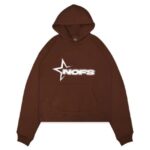 Nofs and Nofs Signature Tracksuit Nofs and Nofs Signature Tracksuit
Nofs and Nofs Signature Tracksuit Nofs and Nofs Signature Tracksuit
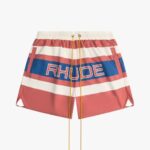 Rhude Shorts Men: The Streetwear Essential With Luxury Bones
Rhude Shorts Men: The Streetwear Essential With Luxury Bones
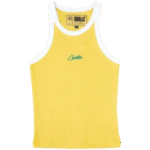 Complete Corteiz Fit: Bolo Jacket, Joggers, and Cargos Guide
Complete Corteiz Fit: Bolo Jacket, Joggers, and Cargos Guide
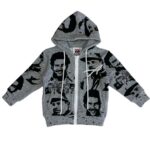 Unlock the Ultimate Streetwear Vibe with the Iconic asaali hoodie Drop
Unlock the Ultimate Streetwear Vibe with the Iconic asaali hoodie Drop
 Add a bold edge to your look with a Stussy hoodie. It’s not just stylish—it brings raw, unapologetic attitude. From graphic designs to oversized fits and unique colors, it’s the perfect streetwear staple. Pair it with boots, distressed denim, or a leather jacket to stand out effortlessly. This hoodie doesn’t follow trends—it sets them.
Add a bold edge to your look with a Stussy hoodie. It’s not just stylish—it brings raw, unapologetic attitude. From graphic designs to oversized fits and unique colors, it’s the perfect streetwear staple. Pair it with boots, distressed denim, or a leather jacket to stand out effortlessly. This hoodie doesn’t follow trends—it sets them.
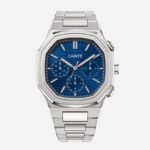 Discover the Elegance of Cainte Watches & Where to Buy………….
Discover the Elegance of Cainte Watches & Where to Buy………….
 From Classic to Bold: Best Box Braid Styles You’ll Absolutely Love
From Classic to Bold: Best Box Braid Styles You’ll Absolutely Love







